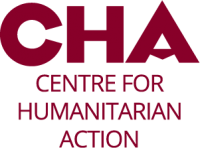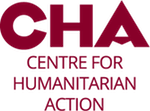| Autor*in: | Manuel Sánchez-Montero |
| Datum: | 6. Oktober 2023 |
The war in Ukraine has revealed the weaknesses in the systems of political negotiation and conflict management. The limitations of the international communities’ response can in part be understood by the polarised position of member states. Cases such as Syria or Mali exposed the need to connect different diplomatic tools under a common approach to address multifactorial challenges, such as the prevention/de-escalation of violent crises, migration or the governance and socio-economic factors to overcome (recurrent) structural violence. The coherence of those elements needs to be improved.
With the issues apparent in united approaches to conflict management, states are independently reevaluating their strategic frameworks, tooling and resources. Spain has already released its renewed Humanitarian Diplomacy Strategy. As Germany is poised to announce its strategy in early 2024, it seems an opportune moment to reflect on the Spanish contribution and see what lessons can be learned.
The aspiration for an integrated approach to crisis engagement
Having been deeply involved in this process within the Spanish administration and having closely tracked its progression, I would like to emphasise the two primary reasons for the Spanish Ministry of Foreign Affairs to allocate resources towards the advancement of this strategy.
1. Ethical coherence with humanitarian principles and the promotion of international legality are all hallmarks of Spain and the European Union.
2. The mutual utility, both for the promotion of humanitarian action and for the broader management of violent crises, of maintaining and strengthening the humanitarian negotiation channel, which on many occasions is the last resort for dialogue with key actors.
From the outset, the political, global affairs (including security issues) and humanitarian units were united in a shared vision to address violent crises from all possible angles. An integrated approach was necessary from multi-sectoral analysis to a coordinated but differentiated response in terms of objectives, principles, and channels. This means focusing on several humanitarian objectives (for example, preventing starvation during conflict as outlined in the UNSC Res 2417) both in a global approach and in individual crises and dedicating the planning, resources, and political capital to pursue them by fostering, on the one hand, collective political and normative frameworks. This includes actions to improve reporting and accountability mechanisms, promote global and regional political engagements, and reinforce international humanitarian law frameworks and institutions such as the Rome Statute enlargement. On the other hand, these humanitarian objectives can also be pursued through bilateral diplomatic efforts of mediation and dialogue promotion. Additionally, where Spain has political leverage, it may be able to provide incentives to reduce conflict and promote specific measures that might help enable humanitarian access and work to uphold international humanitarian law (IHL).
This differentiation facilitates coordinated actions in highly sensitive and exposed areas, such as security and political stabilisation processes. It also allows for bilateral communication, which may be direct or indirect, with key stakeholders in less exposed but equally vital domains, such as humanitarian issues. In many scenarios, this channel remains the sole option available when others are blocked or making limited progress.
In the process of identifying the framework, it was critical to maintain and recognise the distinct nature between humanitarian and other approaches of state diplomacy. Only in doing so is it possible to guarantee legitimacy, ensure its applicability to any environment, and avoid any collateral damage that could occur through mis-implementation.
A case on the latter point was the aid provided by some EU Member States who insisted on channelling humanitarian aid through Syrian opposition institutions as part of the overall effort (including political and military support) to counter the regime of Bachir Al Assad. Instrumentalising aid in such a way had several negative humanitarian impacts: It increased the external political pressure on Damascus-based humanitarian organisations perceived by the humanitarian system as collaborators of the regime. This jeopardised the perception of neutrality and independence of the humanitarian system towards key stakeholders such as the regime and other parties to the conflict weakening its position to negotiate the promotion of the humanitarian space with them. Ultimately, it remarkably limited the chances of getting political support from Member States on the constant humanitarian negotiations with the regime. This wrong comprehensive approach is far from being solved as we are seeing the risk of getting a similar approach with regard to the Russian war against Ukraine.
From the outset, it was clear that to embark on this project, it was necessary to have:
1. A clear conceptual framework (many of the Ministry’s units in charge of managing multi- and bilateral diplomatic channels lacked conceptual, legal, and operational knowledge in humanitarian matters);
2. A focus on thematic and geographic priorities in which to add value;
3. Tools adapted to interact with actors in situations of high volatility and sometimes even non-state actors.
Designing a multistakeholder engagement process
The definition of the strategy followed a process led by the United Nations and Human Rights Unit (similar to that of Global Affairs in other ministries), closely supported by the Humanitarian Action Office, which has promoted the participation of units from the Ministries of Defence and Interior (covering the global and national security dimensions of violent crisis management) as well as civil society through the Cooperation Council (a body composed of the aforementioned ministries, related academic institutions, humanitarian NGOs as well as the main business confederations and workers‘ unions) and an information process in the Congress of Deputies.
The process had a first internal phase of a draft proposal developed by the United Nations and Human Rights Unit, which was circulated for comments among the rest of the public administration units. After these comments were incorporated, it was presented to the Cooperation Council, which issued an opinion that was previously agreed upon by the different members of the Council. In this sense, there was coordinated dialogue and consensus-building between the two main stakeholder groups (governmental units and humanitarian actors) to reconcile the proposals and avoid extreme positions.
It is worth noting that in this process there were necessary and positive tensions between the humanitarian and security perspectives, but special care was taken to maintain the values of coherence and differentiation mentioned above, as well as to focus on issues and contexts considered key for humanitarian actors. For example, there were differing views on how to approach countering violent extremism or terrorism. It was paramount for the Ministry of Interior (MoI) to include it as a core objective of the Humanitarian Diplomacy Strategy which, however, countered the essential humanitarian framework. On the other side, several humanitarian NGOs expressed the need to include an engagement to prevent a specific list of cases where counter-terrorism frameworks were harmful to humanitarian action (such as the criminalisation of humanitarian actors when engaging with non-state armed groups to negotiate access). Through an intensive and extensive dialogue, a solution was found that recognised the position of the MoI but ensured the humanitarian focus of the project. Likewise, it was agreed to include an engagement from the public bodies to include humanitarian exceptions to the counter-terrorism norms without specifying the specific cases. The main point here was to be realistic and get a clear and solid (commonly endorsed) humanitarian respectful framework to be developed afterwards in the action plan and the strategy implementation follow up as well as capturing a mention about the legitimacy of the State to fight terror.
The prioritised themes finally included:
- Conflict prevention and resolution through preventive diplomacy. This includes mediation and conflict resolution, peace and security operations, non-proliferation and disarmament, protecting humanitarian space, and, managing counter-terrorism with respect to humanitarian principles.
- Promoting international humanitarian law. Ambitions include enhancing the rules of international humanitarian law, the prosecution of crimes, promoting accountability and combating impunity. There is a specific focus on addressing the effective implementation of international rules on medical missions and health services, children in armed conflicts, hunger and conflict and the prohibition of its use as a war weapon.
- Increasing the protection for those in vulnerable situations. These include ambitions to improve on issues such as gender equality and diversity, combating sexual violence, protecting persons with disabilities, with a special focus on migrants, refugees and internally displaced persons.
In terms of geographical areas, priority was given to the crises in the Sahel, Colombia and Venezuela in Latin America, and the crises in Syria and Palestine. The following criteria were used:
- humanitarian relevance and dimension of the selected crises.
- strategic interest of the Spanish government.
- presence and capacity for political dialogue (directly or indirectly) of the Spanish government and its partners with key stakeholders of the region.
- availability of economic resources to respond to the given crises and to accompany diplomatic measures.
Challenges encountered and foreseen in the design and implementation of the strategy
There is a general tendency of ministerial units dealing with global issues to overly focus on the high-level international processes and fora. For example, the promotion of Security Council resolutions, political agreements at the Conference on International Humanitarian Law or EU Council policy frameworks and measures, among others. This is undoubtedly necessary but insufficient to address the problems of access, normative restrictions, and specific violations of international humanitarian law that humanitarian teams observe on the ground. For this reason, the strategy insisted on the need to complement the international approach to diplomacy with the local and grounded approach in each of the specific contexts prioritised. In this sense, it was insisted that the geographic units of the Ministry of Foreign Affairs be incorporated into the definition of action plans (forthcoming) for each context, as well as the articulation of specific instructions to the diplomatic missions to incorporate the appropriate objectives and means into their work plans.
In each of these contexts, the United Nations and Human Rights, geographic and Humanitarian Action units are expected to work in a coordinated manner to ensure coherence between the Humanitarian Action and Humanitarian Diplomacy plans. To achieve this, we consider essential the appointment of humanitarian focal points in each of the units and diplomatic delegations concerned, as well as setting up forums and facilitating a regular and specific dialogue hosted by the diplomatic representations on the given contexts, including the humanitarian actors deployed in the area, both to inform these plans in advance and to monitor their implementation and follow-up, being key.
One of the main challenges identified for the implementation of the strategy is that although diplomatic officials have mastered the tools of the sector, they are not familiar with the specific issues of the humanitarian field, the type of impacts sought or the collateral effects that diplomatic action can have on the ground. On the other hand, there is the additional challenge of understanding and integrating other avenues of parallel or multi-track diplomacy (tracks 2 and 3) in a way that contributes to the official track (track 1) to which they are accustomed. Investment in specific training has therefore been strongly advised by the International Cooperation Council, both for experienced members of the diplomatic career who will be assigned to the contexts and units concerned by the strategy’s priorities, and systematically for new members of the career in their general professional preparation.
Finally, any strategy needs a follow-up mechanism to review its results and scope, as well as its implementation dynamics. Two monitoring mechanisms are foreseen for this purpose.
At the global level, the Committee on International Humanitarian Law with a multi-sectoral composition (with the presence of humanitarian actors) has the task of reviewing the progress and results of the Humanitarian Diplomacy Strategy’s Action Plan. It is focused on global processes and issues, but to which the monitoring of processes and forums of prioritised contexts is reported.
At the local level, the diplomatic delegations, together with the Technical Offices of the Spanish Agency for International Development Cooperation, plan to set up working groups with humanitarian actors to define and monitor the action plans in each country. These working groups will have the chance to engage directly in the humanitarian negotiations undertaken by the Spanish Government, from the conception and design to implementation and tracking. This will increase the tracking of these processes together with its monitoring and accountability.
Bringing the strategy to life
Finally, the humanitarian community has welcomed this strategy with hope and commitment, being aware that for it to have an effective impact it will require four key commitments:
- perseverance as part of a non-partisan state policy;
- consistency making it relevant through its real implementation on the ground;
- realism avoiding maximalist objectives and fitting in with the most important political agendas as well as further prioritising the still ample scope of topics included in the strategy;
- plurality incorporating in a real way the sensibilities of different types of actors.
It is an exercise which, beyond seeking excellence and being an ethical reference, offers a practical and operational tool to contribute to the management of violent crises. Humanitarian actors require a strategy of this kind to fulfil their responsibilities and, frankly, it is an approach that no modern state can do without.
Manuel Sánchez-Montero is director of Advocacy at Acción contra el Hambre based in Madrid. He is author of the book “The Fractures of the New World Order” (2005, CIDEAL) and has also collaborated as professor in several Postgraduate studies on International Development Cooperation, Conflict Management and Humanitarian Aid at different institutions such as the Harvard University School of Law, Carlos III University of Madrid, Complutense U. of Madrid, Pavía U. (Italy), the Spanish Diplomacy School, Ministry of Defence School for Strategic Defence Studies among others.
Dieser Blog ist Teil der „Strategy Snacks“, mit denen das CHA die Erneuerung der Strategie des Auswärtigen Amtes für die deutsche humanitäre Hilfe im Ausland begleitet.
Die „Strategy Snacks“ sind zum einen eine Artikelserie auf diesem Blog und zum anderen eine Online-Veranstaltungsreihe im „Out of the box“ Format zur Mittagszeit.




Relevante Beiträge
Three questions for a more feminist humanitarian strategy
27.07.2023Wo humanitäre Diplomatie möglich und höchst notwendig ist
10.08.2023Out of the box: Strategy Snacks 2
20.07.2023 12:00 - 13:00